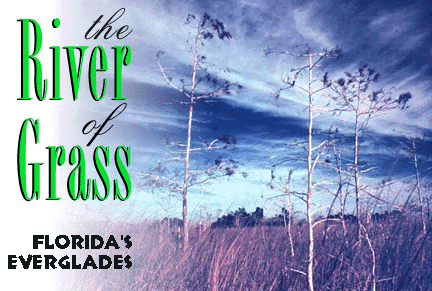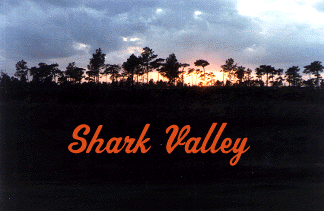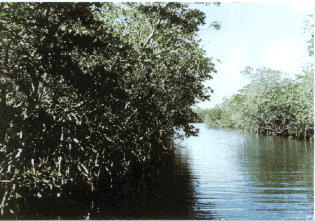
The Everglades packs more life per square foot than just about anywhere, providing a multiplicity of experiences centered around Nature and her glorious manifestations.
 verglades National Park is an Ecotourism jewel of South Florida, offering exciting experiences in ecology, history and conservation. Occupying the southern tip of the state, from Homestead on the east to the Gulf of Mexico on the west and from the Tamiami Trail (Route 41) on the south to the Gulf, Everglades National Park has over 1.5 million acres. Teeming with exotic birds, animals and plant life, this is the only place in the United States where the endangered American crocodile can be found in the wild, alongside the American alligators, manatees and fascinating plant and animal life that is unique to the Everglades. verglades National Park is an Ecotourism jewel of South Florida, offering exciting experiences in ecology, history and conservation. Occupying the southern tip of the state, from Homestead on the east to the Gulf of Mexico on the west and from the Tamiami Trail (Route 41) on the south to the Gulf, Everglades National Park has over 1.5 million acres. Teeming with exotic birds, animals and plant life, this is the only place in the United States where the endangered American crocodile can be found in the wild, alongside the American alligators, manatees and fascinating plant and animal life that is unique to the Everglades.
Visitors to the park can enter at either the Shark Valley entrance or the Main entrance which is located a few miles west of US 1 on Palm Drive in Homestead. The Shark Valley entrance allows visitors access to a 15-mile paved path flanked by open grasslands and a canal chock-a-block with alligators, birds, fish and plant life. You can view the area by trams that are operated by the Park service, which include a guided tour full of interesting information about the area.

A favorite trip for locals and visitors alike is to visit the Shark Valley area on a full moon night. We parked just outside the gates so as not to be locked in at night and proceeded to bicycle along the path, warily cruising by various sizes of alligator
s resting on the banks of the canal. After a glorious sunset, we continued to the lookout tower at the halfway mark along the trail (7 miles from the starting point and another 8 miles if you follow the loop back around to the parking area). Here we watched close up as the moon crested the horizon and shone its light over a landscape that was truly other worldly. As we pedaled back to the parking area, we were surprised to see that a few alligators were still placidly resting along the trail, perhaps as entranced as we were by the brilliant moonlight.
My favorite part of the Nine Mile Pond trail was the third pond that was teeming with alligators, some 10 to 12 foot. Here we found four large old alligators sunning themselves on the banks while some of thier friends were swimming along, warily keeping an eye on our canoe as we passed by. At one point, we passed within ten feet of an alligator sitting on the edge of the pond.
I found the camping facilities at the Long Pine Key campground simple but adequate. Restrooms and recycling bins were complemented by a well kept camping area amidst the tall pines. We were situated near the edge of a small lake but the mosquitoes were not a problem, probably due to liberal spraying with Cutters mosquito repellent, a must for any visit to the Everglades.
The view at sunrise - the tall trees silhouetted against a band of bright orange sky along the horizon, blending into blue and the purple of the night sky, replete with stars and moon - was a sight to remember.
|
Or, for the more energetic visitor, bikes are available for rental, or bring your own. It's also very enjoyable to walk at least part of the trail, which allows you to see the alligators and other wildlife up close at a more leisurely pace. You will encounter large numbers of alligators lazily sunning themselves along the banks of the canal, often partially sticking out onto the trail. Luckily, their appetites are usually satiated from the abundant fish and birds, so they should not view us as a potential meal. Their usual reaction to humans is to slither into the water and swim away or just lie there and continue sunning themselves. However, if they or their nest seems threatened, alligators can run up to 40 miles per hour, so be sure and show them a healthy amount of respect. Don't impose yourself on their territory.
In the south the main entrance to the park is accessible from the Florida Turnpike and US 1 via Homestead and Florida City. Here the main visitor center welcomes over 1 million visitors a year to the park. Not too far along the road is the Long Pine Key Campground which offers facilities for tents and RV's. This campground is located amidst a pine forest situated on a large expanse of high ground that includes a small lake, (complete with alligators) and is open to fishing.
Continuing along the road are various breathtaking stops, such as Mahogany Hammock, the Anhinga trail, and the viewing platform at the Pa-hay-okee area.
At the end of the road, 38 miles from the entrance, lies the Flamingo Visitors Center. This area sits on the coast of the Gulf and offers magnificent views of the coastline with islands that serve as roosting spots for many of the thousands of birds that make the park their winter home. At sunset, flock after flock of birds wheel through the sky to the islands for their evening rest stop.
The facilities available at Flamingo include a Lodge for overnight stays, a restaurant, camping area, grocery and convenience store, gift shop and marina. The marina offers rental canoes and kayaks for either saltwater or freshwater adventures. There are miles and miles of lakes and twisting waterways that offer the chance to get off the beaten track and see the Everglades from a different perspective.

|
Left: A well-marked inland waterway route runs from the Flamingo Visitor Centerto Everglades City (see map). Markers guide boats over its 99 miles of winding channels. Boats more than 18 feet or with high cabins and windshields should not attempt this trip because of overhanging foliage and narrow channels. The route requires at least 6 hours with an outboard motor or 7 days by canoe.
|
Some campers opted for a canoe ride through the Everglades to a campground that is only accessible by water. Another favorite is the canoe trail at Nine Mile Lake. This trail is well marked and takes the canoer through a maze of interconnected ponds and waterways that snakes through the Everglades and allows visitors to see the Everglades from the unique perspective of being right in the middle surrounded by mangroves, sawgrass water and wildlife.
Many folks come to the Everglades to view the varied bird kingdom. This includes wood storks, peregrine falcons, Cape May warblers, bobolinks, tree swallows, black vultures, ibis, roseate spoonbills, ospreys, great white herons and bald eagles (there are four known to migrate to the park).
|

 verglades National Park is an Ecotourism jewel of South Florida, offering exciting experiences in ecology, history and conservation. Occupying the southern tip of the state, from Homestead on the east to the Gulf of Mexico on the west and from the Tamiami Trail (Route 41) on the south to the Gulf, Everglades National Park has over 1.5 million acres. Teeming with exotic birds, animals and plant life, this is the only place in the United States where the endangered American crocodile can be found in the wild, alongside the American alligators, manatees and fascinating plant and animal life that is unique to the Everglades.
verglades National Park is an Ecotourism jewel of South Florida, offering exciting experiences in ecology, history and conservation. Occupying the southern tip of the state, from Homestead on the east to the Gulf of Mexico on the west and from the Tamiami Trail (Route 41) on the south to the Gulf, Everglades National Park has over 1.5 million acres. Teeming with exotic birds, animals and plant life, this is the only place in the United States where the endangered American crocodile can be found in the wild, alongside the American alligators, manatees and fascinating plant and animal life that is unique to the Everglades.

